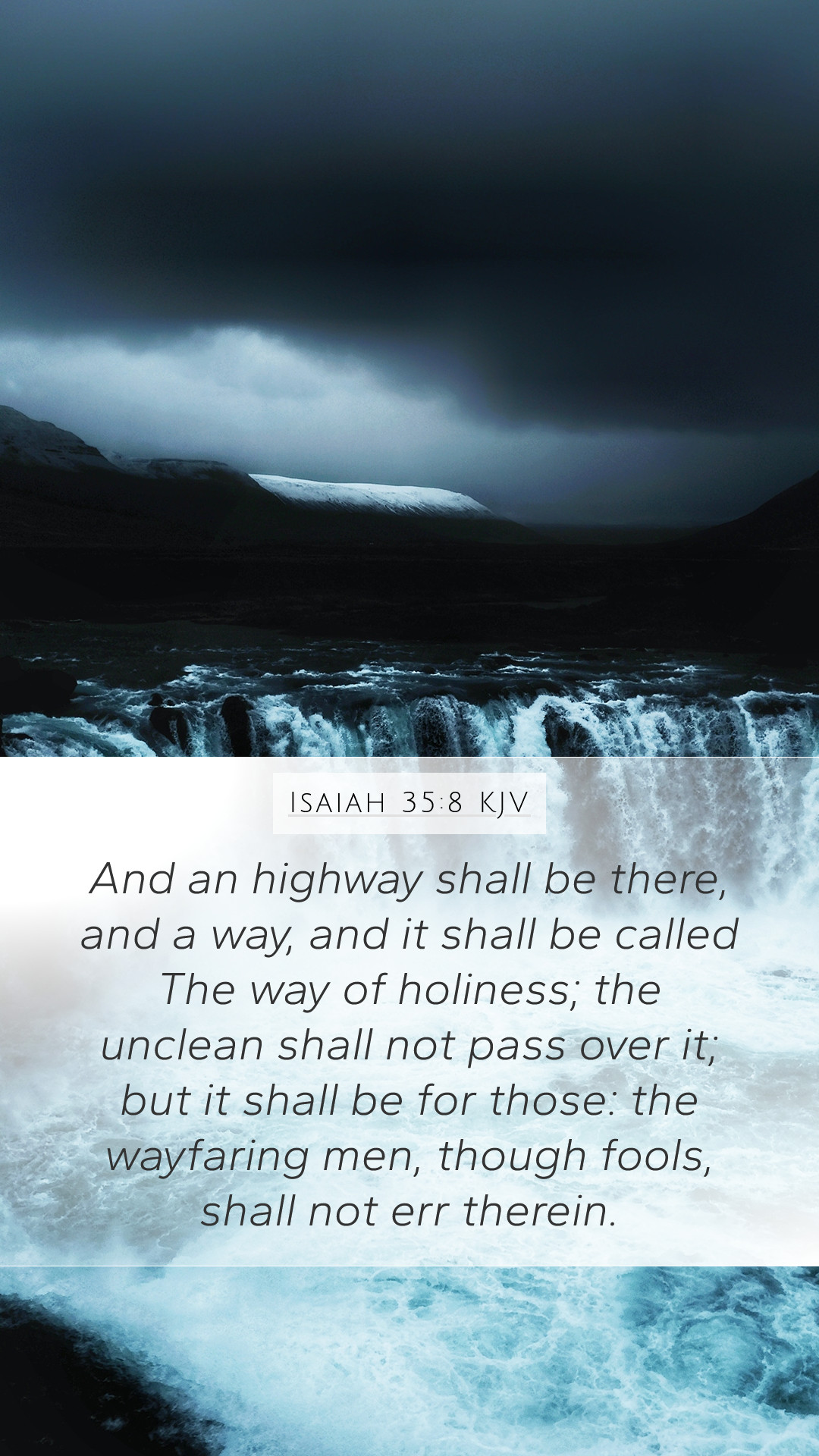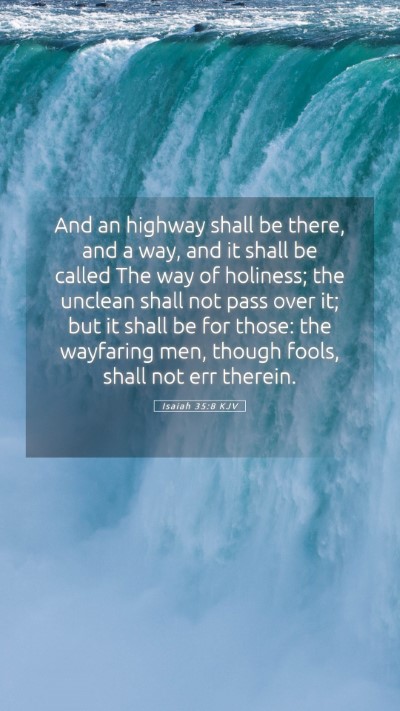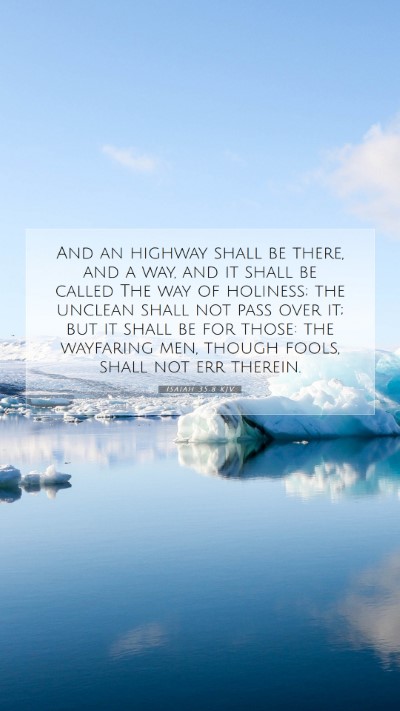Understanding Isaiah 35:8
Isaiah 35:8 states, "And there will be a highway there, and a way, and it will be called the Highway of Holiness; the unclean will not travel on it, but it will be for those who walk in that way; and fools will not wander on it." This verse presents a profound insight into the concept of holiness and the spiritual journey believers undertake. In this analysis, we will explore the meanings of this verse, using various public domain commentaries for a comprehensive understanding.
Verse Meaning
The "Highway of Holiness" symbolizes a path dedicated to God, representing the way of the righteous. It is a metaphorical expression indicating that those who pursue holiness (the state of being holy, set apart for God's purposes) will find a specific pathway made accessible through God's grace. This idea encourages followers to seek the spiritual journey that leads to eternal life and fellowship with God.
Commentary Insights
Matthew Henry's Commentary
Matthew Henry emphasizes the exclusivity of the highway, asserting that it is not for the unclean or the foolish, but for those who walk in the way of righteousness. He interprets this as God’s way of providing assurance to His people that despite their troubles, there is a safe and holy path available to them. This commentary informs readers of the significance of personal holiness as part of the journey to salvation.
Albert Barnes' Notes on the Bible
Albert Barnes notes the importance of the "highway" as a clear and direct route provided by God, specifically for His people. He suggests that this passage points to a time when redemption and peace will be fully realized. He explains that only the righteous can traverse this holy path, reinforcing the idea that one's moral character is pivotal in one's journey toward God.
Adam Clarke's Commentary
Adam Clarke focuses on the term "fools" in this context, indicating that those wise in the eyes of the world may not understand or be able to find this highway. He reflects on the distinctiveness of those who are spiritually enlightened, highlighting that true wisdom lies in following God's commandments. His commentary adds depth by identifying the spiritual discernment required to navigate this path.
Application and Relevance
In our lives today, Isaiah 35:8 encourages believers to assess their spiritual journey. There is an invitation to walk in holiness and develop an understanding of what it means to be set apart for God. This path's existence offers hope, especially for those feeling lost or unworthy. Here are some thoughtful applications:
-
Personal Reflection: Take time to meditate on personal holiness and the steps needed to align oneself with God’s purpose.
-
Community Teaching: Share insights about the importance of the "Highway of Holiness" in Bible study groups and church settings.
-
Practical Steps: Focus on daily actions and thoughts that promote holiness, keeping in mind that the path is accessible to those who seek it.
Cross References
- Revelation 21:27 - Speaks of the purity required to enter the new heaven.
- Proverbs 4:18 - The path of the righteous is like the first gleam of dawn.
- Ephesians 2:8-9 - Emphasizes grace in obtaining salvation.
Conclusion
Isaiah 35:8 encapsulates the essence of a life guided by holiness and righteousness. It serves as a reminder of the spiritual pathways available to believers and the significance of walking in accordance with God's commandments. By understanding the overlapping insights collected from the commentaries of Matthew Henry, Albert Barnes, and Adam Clarke, readers gain a fuller perspective on the importance of spiritual journeys in Christian faith. Embrace the "Highway of Holiness" as a call to reflection and transformation.


